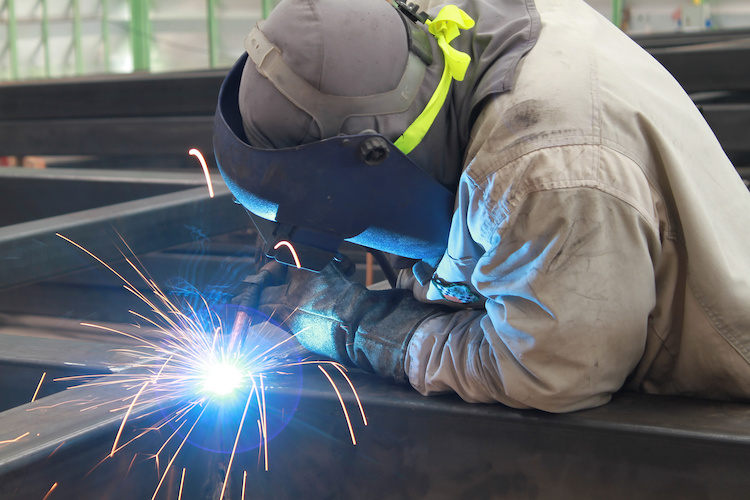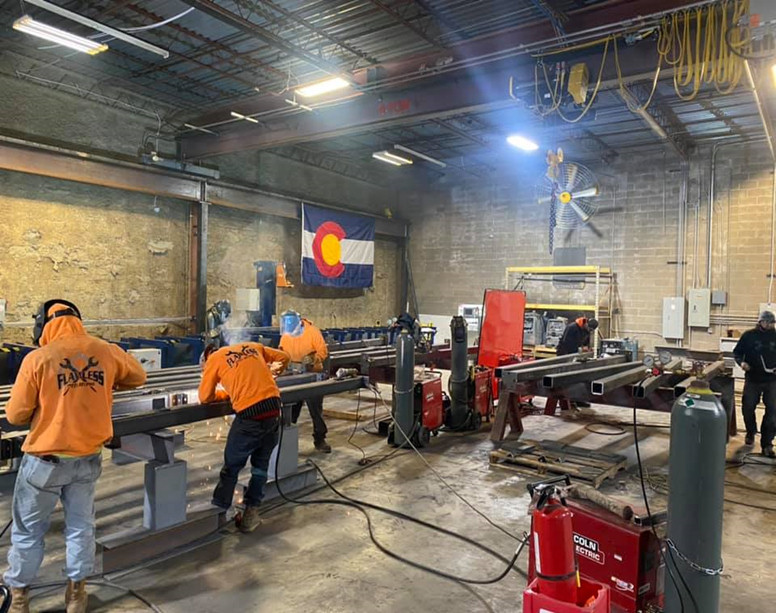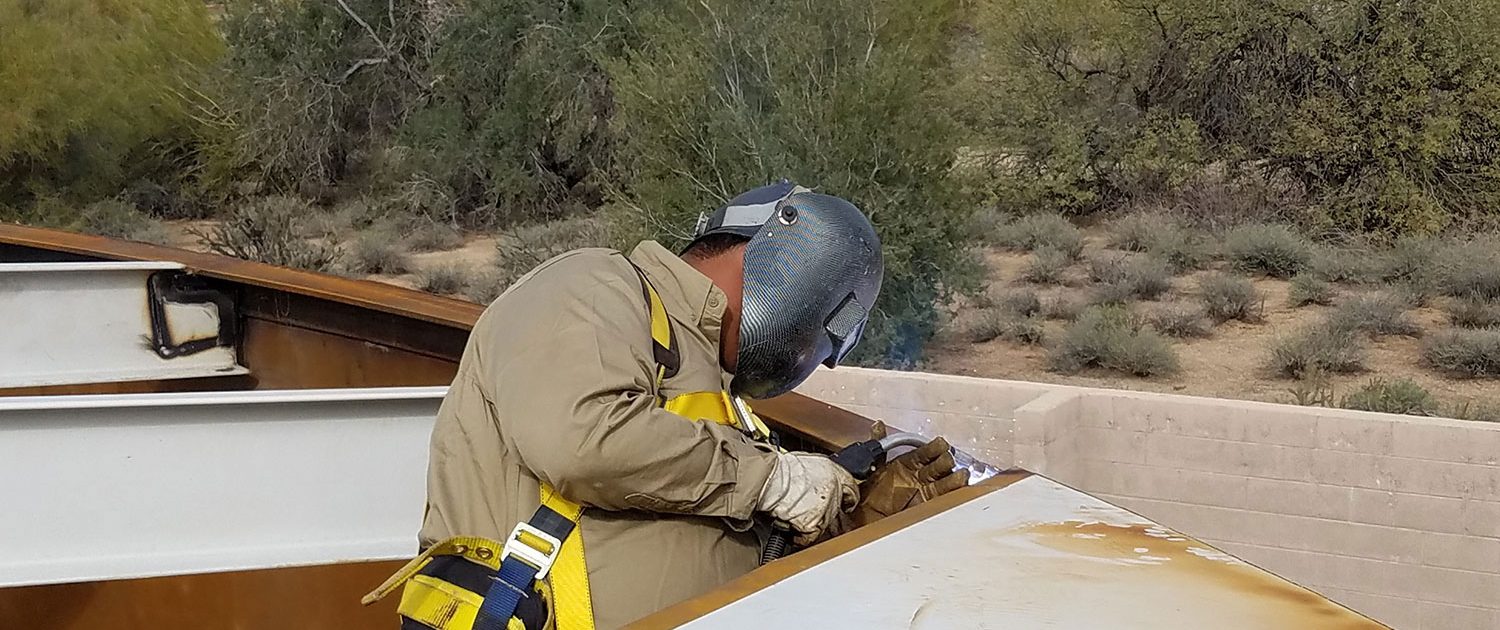Specialist Steel Fabricators Melbourne: Top Quality You Can Trust
Specialist Steel Fabricators Melbourne: Top Quality You Can Trust
Blog Article
Innovative Trends in Steel Construction: Enhancing Sturdiness and Accuracy
In the world of steel fabrication, the quest of toughness and accuracy has actually led to a wave of innovative patterns that are reshaping the market. These fads are not simply forming the existing but also laying the groundwork for the future of steel construction, guaranteeing more improvements in durability and precision.
Advanced Welding Technologies
In the realm of steel construction, the adoption of sophisticated welding modern technologies has considerably transformed the market's technique to attaining remarkable top quality and accuracy in architectural welds. Advanced welding technologies, such as laser beam welding and friction stir welding, have emerged as game-changers in the field. Laser beam welding employs a focused laser beam of light to join metal elements with amazing accuracy and rate, making it excellent for intricate styles and thin materials. On the various other hand, rubbing mix welding produces extremely strong bonds by mechanically intermixing the particles of the products at the joint, eliminating the need for thawing the metal. These innovations supply many benefits, including lowered heat-affected areas, minimal distortion, and boosted mechanical homes in the welded joints. By leveraging these innovative welding methods, steel fabricators can boost the durability, toughness, and precision of their architectural welds, satisfying the progressively demanding needs of modern-day building tasks.
Robot Automation in Construction
Welcoming robotic automation has become a keystone of contemporary steel fabrication methods, improving and simplifying processes performance throughout the industry. Robotics are changing the method steel parts are manufactured, supplying exceptional accuracy and rate while reducing human error. These automated systems can handle repeated jobs with consistent accuracy, causing better final result.
One key advantage of robotic automation in steel fabrication is the capacity to function around the clock without fatigue, dramatically increasing production output. This constant operation lessens downtime and increases task timelines, inevitably conserving expenses for makers. Furthermore, robotics can be configured to carry out elaborate tasks that may be hazardous or tough for human employees, boosting security in the work environment.
In addition, robotic automation makes it possible for seamless combination with various other electronic innovations, such as computer-aided layout (CAD) software and Web of Points (IoT) systems (steel fabricators melbourne). This interconnected technique boosts communication between various phases of construction, maximizing workflows and making sure real-time monitoring and control. As the steel construction sector continues to develop, robot automation stands apart as a transformative pressure driving performance and precision in making processes

High-Strength Alloy Development
The advancement of high-strength alloy development in steel fabrication is reshaping the industry's approach to enhancing material toughness and efficiency. High-strength alloys are crafted to show superior mechanical residential or commercial properties, such as boosted tensile stamina, durability, and deterioration resistance contrasted to standard steel qualities. By including these innovative alloys right into construction procedures, manufacturers can produce elements that stand up to higher anxiety degrees and rough settings, bring about more sturdy and dependable end items.
One trick benefit of his explanation high-strength alloy development is the capability to lower product thickness without compromising architectural honesty. This not only results in lighter-weight parts however also adds to cost financial savings and enhanced efficiency in manufacture and assembly procedures. Additionally, the enhanced strength-to-weight proportion of these alloys permits the design and building and construction of structures with greater load-bearing capacities while decreasing general weight.
3D Modeling and Simulation Software Program
Improvements in steel fabrication procedures have been substantially moved by the integration of innovative 3D modeling and simulation software tools. These devices allow producers to develop comprehensive digital models of their tasks, enabling them to picture the end product with precision before any type of physical work begins. By imitating different tension variables, environmental problems, and architectural lots, producers can optimize designs for improved resilience and efficiency. Additionally, 3D modeling and simulation software enhance the production procedure by recognizing potential concerns beforehand, decreasing the need for expensive rework and reducing material waste.

Lasting Practices in Steel Production
Including lasting techniques into steel manufacturing processes is crucial for lessening environmental effect and ensuring long-lasting resource accessibility. One vital sustainable technique is the adoption of energy-efficient modern technologies to minimize greenhouse gas emissions during the steel production More Help process. This includes making use of renewable energy resources, such as solar or wind power, to power steel plants and implementing energy-efficient devices to maximize power usage.
One more crucial element of lasting steel manufacturing is the responsible sourcing of resources. This entails ensuring that the iron ore and other sources made use of in steelmaking are gotten from eco friendly and ethical sources. By promoting openness in the supply chain and sticking to rigorous ecological standards, steel producers can lessen the adverse influences of resource extraction on local environments and areas.

Conclusion
Finally, the cutting-edge trends in steel fabrication such as advanced welding innovations, robot automation, high-strength alloy development, 3D modeling and simulation software, and lasting practices are improving the resilience and precision of steel products. These innovations are reinventing the steel fabrication industry by boosting quality, sustainability, and effectiveness. It is clear that the future of steel fabrication hinges on embracing these sophisticated innovations to meet the demands of modern-day construction and production markets.
In the realm of steel manufacture, the pursuit of durability and precision has actually led to a wave of innovative fads that are reshaping the market.In the world of steel fabrication, the adoption of sophisticated welding technologies has significantly reinvented the sector's method to attaining exceptional top quality and precision in architectural welds. As the steel manufacture market proceeds to evolve, robotic automation stands out as a transformative pressure driving effectiveness and accuracy in manufacturing procedures.
Additionally, recycling and recycling steel learn the facts here now scrap and waste products play a significant duty in enhancing the sustainability of steel manufacturing. steel fabrication melbourne.In conclusion, the cutting-edge trends in steel manufacture such as advanced welding modern technologies, robotic automation, high-strength alloy growth, 3D modeling and simulation software application, and lasting practices are boosting the sturdiness and precision of steel items
Report this page